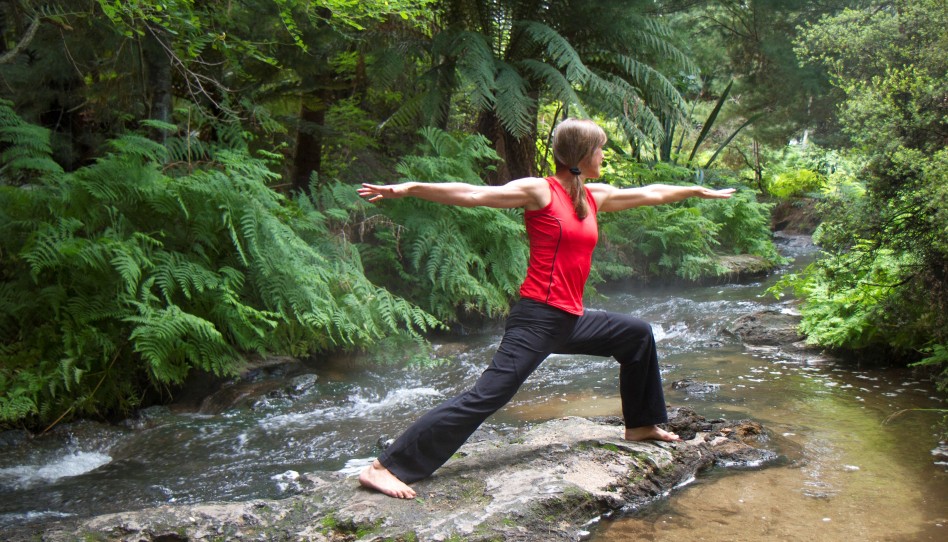Eight Limbs of Yoga

It may surprise some to know that asanas, or the physical poses of yoga, are only one part of a multi-faceted system of Yoga. Classical Yoga generally refers to the ashtanga or eight-limbed yoga system (ashta=eight, anga=limb). The ancient sage Patanjali delineated this system in his Yoga Sutras, written over 2000 years ago. These eight steps progress upward, from the most external, social practices to the deepest, most profound internal process. They act as guidelines on how to live a meaningful, purposeful and spiritual life as we progress towards the final goal of supreme peace and union with the divine-enlightenment! The first four stages of Patanjali’s ashtanga yoga concentrate on refining our personalities, gaining mastery over the body, and developing an energetic awareness of ourselves, all of which prepares us for the second half of this journey, which deals with the senses, the mind, and attaining a higher state of consciousness.
1. Yama: Yamas are social precepts that deal with one’s ethical standards and sense of integrity, focusing on our behavior and how we conduct ourselves in life. They’re universal practices that relate best to what we know as the Golden Rule, “Do unto others as you would have them do unto you.” The five yamasare: nonviolence, truthfulness, “non-stealing,” continence (temperance in sexual matters) and “non-coveting.”
2. Niyama: The second limb becomes a little more personal and has to do with self-discipline and spiritual observances. Developing a meditation practice, attending temple or church services, saying grace before meals–all are examples of niyamas in practice. The five niyamas are cleanliness, contentment, spiritual austerities, study of the sacred scriptures and of one’s self, and Isvara pranidhana, surrender to God.
3. Asana: The physical postures practiced in yoga. In the yogic view, our body is a temple of spirit, the care of which is an important stage of our spiritual growth. Some think of asanas as an exercise for the physical body, but if performed in an authentic way the physical will be integrated with self-discipline, mindfulness, unbroken mental focus and devotion to God-skills that both pave and create our path. Remembrance of the spiritual purpose behind the physical allows us to reconnect with our innate goodness, power and beauty, and express ourselves from that divine place.
4. Pranayama: Breathing exercises. Yogis believe pranayama not only rejuvenates the body but also actually extends life itself. This fourth stage consists of techniques designed to gain mastery over the respiratory process while recognizing the connection between the breath, mind, and emotions. Patanjali wrote that if one controls the breath, the mind will follow. Pranayamacan be practiced during meditation, as part of your yoga routine or even simply, when walking, by paying attention to the inhale and exhale of the breath.
5. Pratyahara: Withdrawal of the senses. During this stage we make the conscious effort to draw our awareness inside, away from the external world and its stimuli. While still conscious of our senses, we detach from them. The practice of pratyahara provides us with an opportunity to step back and take a look at ourselves – to objectively observe our mind’s chatter, cravings and other thoughts that may not be life-affirming and may, in fact, interfere with our inner growth and sense of peace.
6. Dharana: Mental concentration. As each stage prepares us for the next, the previous practice of pratyahara creates the setting for dharana. Having quieted outside distractions, we can now deal with the distractions of the mind itself. A true challenge! To learn this we start to slow down the thinking process by concentrating on a single object: a flame, our own heart, a mantra, or an image of a deity. We have already begun to develop our powers of concentration in the previous stages. In asana and pranayama, though we pay attention to our actions, our focus constantly shifts as we fine-tune the many nuances of any particular posture or breathing technique. In pratyahara we become self-observant; now, in dharana, we focus our attention on a single point. Extended periods of concentration naturally lead to meditation.
7. Dhyana: Meditation or the uninterrupted flow of concentration. Although concentration (dharana) and meditation (dhyana) may appear to be one and the same, there is a distinction between the two. Where dharana practices one-pointed attention, dhyana is ultimately a state of being fully aware without focus. At this stage, the mind has been quieted, and in the stillness it produces few or no thoughts at all. This may seem a far-off, difficult task, but remember that yoga is a process. Even though we may not attain the “picture perfect” pose, or the ideal state of consciousness, we benefit at every stage of our progress. It is by our very human, sincere efforts that we achieve Grace.
8. Samadhi: Absorption with the Absolute. Patanjali describes this eighth and final stage of ashtanga as a state of ecstasy. The meditator realizes a profound connection to the Divine and an interconnectedness with all living things. With this realization comes the “peace that passeth all understanding,” the experience of bliss and freedom at being one with the Universe. Enlightenment is the awareness that nothing exists which is not supreme Consciousness. This is the highest of goals – yet if we choose to move through life with an open heart, we glimpse it even now, in the sound of a child’s laugh, the absolute perfection of spring’s first green leaf, the deep peace one feels at the end of a yoga class.
Light and Love to You! Namasté!
Uta and Your Friends from Take The Magic Step®
Reading Suggestions:
Updated March 27, 2024
Updated February 6, 2018
Updated September 3, 2015
- Posted May 16, 2006
© Copyright 2006-2024 by Take The Magic Step®. All Rights Reserved.




